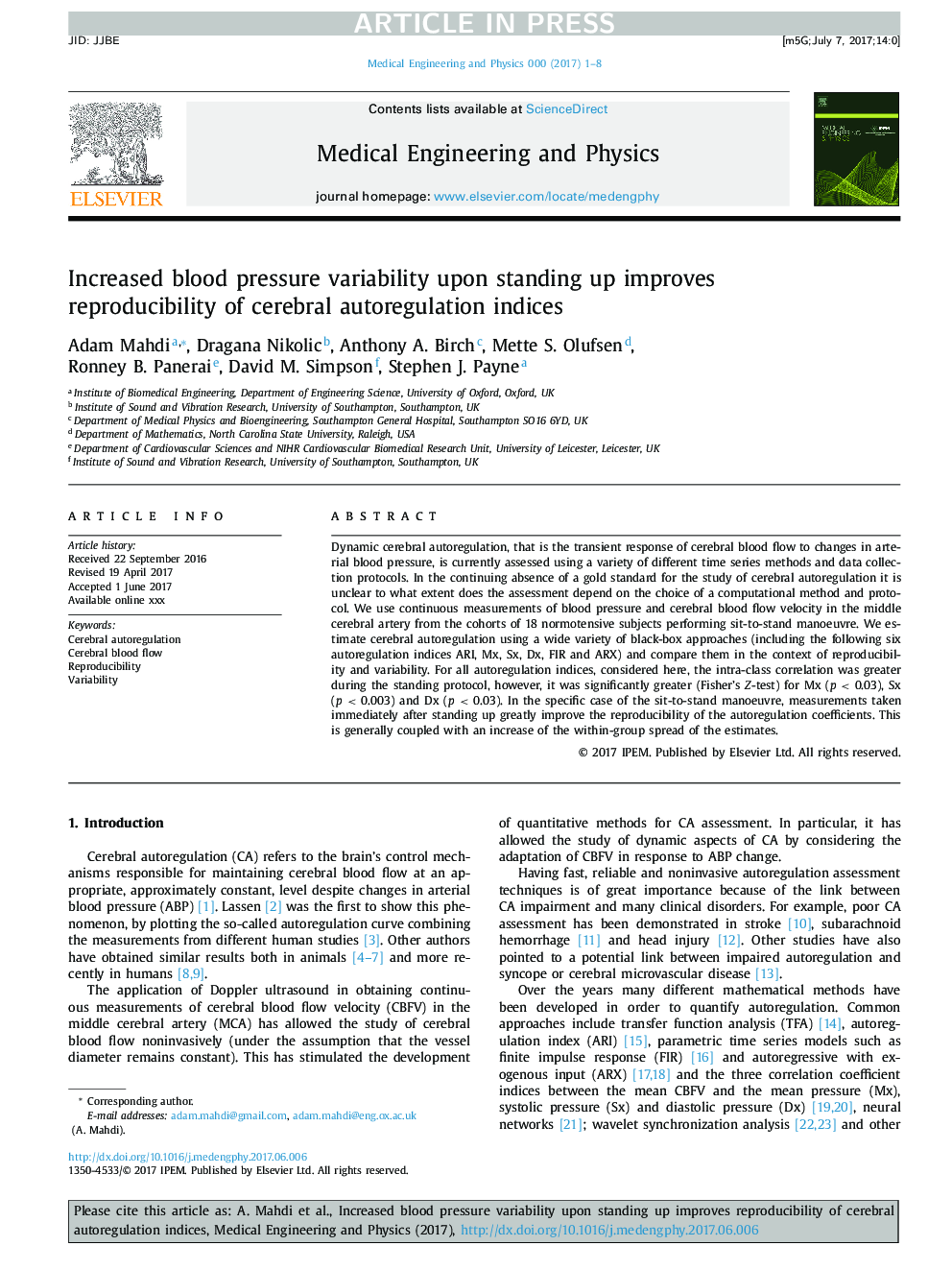| Article ID | Journal | Published Year | Pages | File Type |
|---|---|---|---|---|
| 5032648 | Medical Engineering & Physics | 2017 | 8 Pages |
Abstract
Dynamic cerebral autoregulation, that is the transient response of cerebral blood flow to changes in arterial blood pressure, is currently assessed using a variety of different time series methods and data collection protocols. In the continuing absence of a gold standard for the study of cerebral autoregulation it is unclear to what extent does the assessment depend on the choice of a computational method and protocol. We use continuous measurements of blood pressure and cerebral blood flow velocity in the middle cerebral artery from the cohorts of 18 normotensive subjects performing sit-to-stand manoeuvre. We estimate cerebral autoregulation using a wide variety of black-box approaches (including the following six autoregulation indices ARI, Mx, Sx, Dx, FIR and ARX) and compare them in the context of reproducibility and variability. For all autoregulation indices, considered here, the intra-class correlation was greater during the standing protocol, however, it was significantly greater (Fisher's Z-test) for Mx (p < 0.03), Sx (p < 0.003) and Dx (p < 0.03). In the specific case of the sit-to-stand manoeuvre, measurements taken immediately after standing up greatly improve the reproducibility of the autoregulation coefficients. This is generally coupled with an increase of the within-group spread of the estimates.
Related Topics
Physical Sciences and Engineering
Engineering
Biomedical Engineering
Authors
Adam Mahdi, Dragana Nikolic, Anthony A. Birch, Mette S. Olufsen, Ronney B. Panerai, David M. Simpson, Stephen J. Payne,
